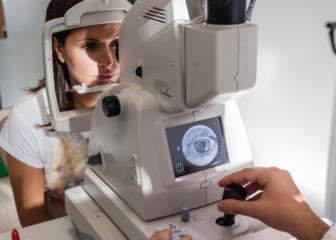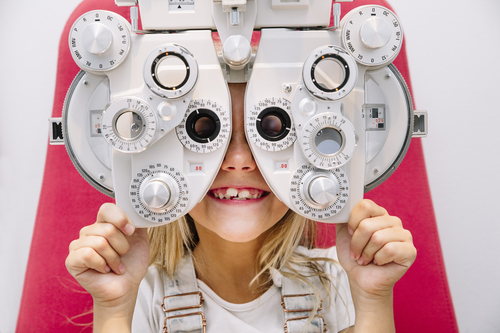Understanding the Function of Your Eye Doctor in Maintaining Vision
Understanding the Function of Your Eye Doctor in Maintaining Vision
Blog Article
Checking Out the Most Recent Technical Developments in Optometry and What They Mean for Optometrists
From the precision of Optical Comprehensibility Tomography to the nuanced insights provided by AI-driven diagnostic tools, these advancements are setting new standards in individual analysis and therapy. As these innovations permeate the technique, eye doctors are encountered with the challenge of welcoming these devices to enhance patient outcomes.
Advancements in Diagnostic Tools
Advancing the field of optometry, developments in analysis devices have transformed the method eye treatment specialists assess and identify visual impairments and ocular conditions. The previous decade has actually observed considerable technological developments, allowing more precise and comprehensive assessments.
One more trick development is the intro of sophisticated corneal topography systems, which map the surface area curvature of the cornea with precision. These devices are particularly beneficial for suitable contact lenses and diagnosing corneal disorders. Electronic retinal imaging has actually changed standard ophthalmoscopy, supplying detailed, scenic sights of the retina that assist in comprehensive aesthetic evaluations.
The development of wavefront aberrometry has likewise been vital, making it possible for the analysis of refractive mistakes with unrivaled precision (Eye Doctor). This innovation aids in tailoring corrective lenses and boosting medical results for refractive surgical treatments. Jointly, these analysis developments empower optometrists to provide remarkable patient care, ensuring very early intervention and tailored treatment techniques, inevitably improving aesthetic health and wellness results
AI in Patient Monitoring
Structure on the structure of cutting-edge diagnostic devices, the incorporation of fabricated knowledge (AI) in individual administration stands for a transformative jump for optometry. AI systems are increasingly employed to improve performance, precision, and customization in patient care.
In addition, AI-driven platforms facilitate streamlined person communications and administrative procedures. Automated scheduling, digital consultations, and individualized follow-up strategies not just enhance client complete satisfaction yet likewise enhance time administration for specialists. These systems can triage patients based on the urgency of their problems, ensuring that those in crucial need receive timely focus.
Furthermore, AI enhances decision-making by offering eye doctors with evidence-based suggestions and treatment paths. By incorporating information from digital health documents, AI devices offer insights that notify professional decisions, minimizing the risk of errors and improving patient end results. As AI proceeds to evolve, its function in client administration will likely expand, improving the landscape of optometric treatment.
Developments in Retinal Imaging
In the realm of optometry, retinal imaging has experienced remarkable technical advancements that are enhancing analysis capabilities and patient treatment. Technologies such as Optical Coherence Tomography (OCT) and fundus photography have transformed just how optometrists examine the retina and visualize.
Enhanced imaging techniques like OCT angiography are additional refining analysis precision. This non-invasive strategy maps blood circulation in the retina, providing vital insights into vascular wellness without the demand for dye injections. Furthermore, adaptive optics modern technology is being integrated into retinal imaging systems to fix ocular aberrations, providing extraordinary photo clarity. Such developments promote the identification of minute retinal changes that could symbolize condition progression.
Furthermore, innovations in expert system are increasing retinal imaging by enabling automatic evaluation of big datasets. These systems assist optometrists in identifying patterns a measure of pathology, therefore boosting diagnostic internet accuracy and performance. Jointly, these advancements are changing retinal imaging right into a foundation of contemporary eye treatment, boosting outcomes and broadening healing possibilities.
Teleoptometry's Expanding Function
Teleoptometry is increasingly ending up being a vital part of eye care, driven by improvements in digital communication and diagnostic devices. This is especially valuable in underserved and rural locations where accessibility to specialized eye treatment is often minimal.
The assimilation of expert system (AI) further enhances teleoptometry, allowing the evaluation of aesthetic data and helping in the detection of ocular conditions such as glaucoma and diabetic retinopathy. AI-powered algorithms can rapidly click for more info translate complex imaging data, providing eye doctors with useful understandings that strengthen medical decision-making.
Moreover, teleoptometry supports connection of treatment via smooth integration with digital health and wellness records (EHRs), permitting eye doctors to maintain detailed client histories. When consulting with various experts., this ensures that clients receive customized and constant treatment also.
Despite these advantages, difficulties stay, including guaranteeing information safety and taking care of individual assumptions. Teleoptometry stands for a substantial stride towards more easily accessible, efficient, and patient-centered eye treatment. As technology advances, its duty is positioned to increase additionally.

Future Trends in Eye Treatment
A myriad of ingenious trends is set to improve the future of eye care, driven by technical improvements and the advancing needs of patients. One considerable pattern is the integration of expert system (AI) in diagnostics, which guarantees to improve the precision and efficiency of eye evaluations. AI algorithms can assess vast amounts of information from retinal pictures, possibly identifying conditions like diabetic retinopathy and glaucoma earlier click here for more info than conventional methods.
Additionally, individualized medication is obtaining traction in optometry, with genetic screening notifying tailored treatment plans. This method intends to enhance patient outcomes by customizing treatments to specific genetic accounts. Wearable technology, such as clever call lenses, is also on the perspective, using real-time surveillance of intraocular pressure or glucose degrees, hence giving constant understandings right into systemic and ocular health.
The fostering of augmented truth (AR) and digital fact (VR) in training and patient education is another emerging fad. These modern technologies use immersive experiences that can boost understanding and skills both for clients and optometrists. As these fads develop, optometrists need to remain abreast of technical improvements to provide cutting-edge treatment, guaranteeing enhanced patient end results and fulfillment in the vibrant landscape of eye care.
Verdict

Jointly, these analysis advancements empower optometrists to deliver exceptional person care, ensuring early intervention and tailored therapy techniques, ultimately improving aesthetic health outcomes.

As these innovations proceed to develop, eye doctors must adjust and include them into practice, eventually maximizing workflow effectiveness and raising the criterion of eye treatment delivered to individuals.
Report this page